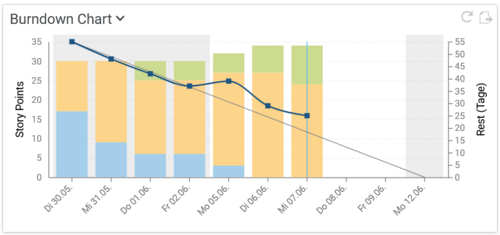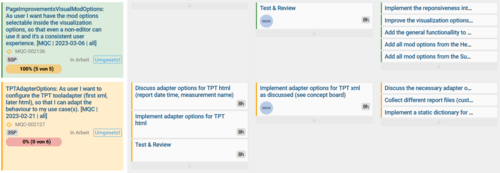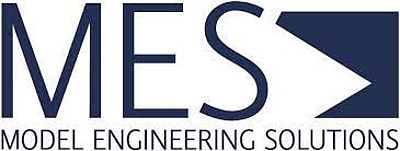We are committed to agility
Success story from Model Engineering Solutions GmbH (MES)
Agile development has proven itself as a development paradigm for the creation of our software products. This made it all the more important for Model Engineering Solutions GmbH to introduce Projektron BCS, a project management solution that natively supports agile development. The advanced functionality with the connection of commercial processes can be the basis for an integrated control of development and sales.
About Model Engineering Solutions GmbH (MES)
Model Engineering Solutions GmbH (MES), based in Berlin, was founded in 2006. According to the principle "If the software runs, the car drives", we focus on model-based development and quality assurance of embedded software in the automobile.
We support our customers with an optimal interlocking of process management, quality engineering, tool solutions and training. Model-based development is a highly developed field. Accordingly, it requires competence, experience and the right tools. Our special tools facilitate model-based software development, improve quality and increase the safety of the software.
Project management tool wanted
For the development of our software products, we rely on agile project management according to Scrum. Since we also do classic project management in other areas, we were looking for a tool that would help us manage our projects and support both approaches. In addition, we wanted to link our customer data, including a ticket system for our customer support, with the projects. Until now, we had been working with individual solutions, which in the future should mesh better and be more transparent. In the years leading up to the introduction of Projektron BCS, our company saw strong growth. The number of employees and projects increased considerably and with it the requirements for a central management tool.
Introduction of Projektron BCS for Scrum projects
We found a solution in Projektron BCS. During the evaluation phase, Projektron BCS convinced us with its versatile range of functions and flexible customisation options for Scrum projects. The well-structured design enabled us to familiarise ourselves with it quickly. Many configuration options on the most varied conceptual levels allow for diverse variants for the implementation of adjustments and optimisations.
First, we introduced Projektron BCS in July 2012 with a focus on software development according to Scrum. We concentrated on a pilot project and were advised by Projektron support on the initial set-up of a Scrum project. In the role of the product owner, one is supported by an intuitive assistant when planning the sprints, such as team planning, effort distribution and setting meetings.
The product backlog in BCS allows us to manage and prioritise the epics, user stories and acceptance tests in a very clear and structured way. This means that the current project status can be viewed centrally and transparently and forms the basis for discussions with stakeholders and estimation meetings with the team.
The possibility of linking customer tickets with user stories is particularly helpful in order to provide quick feedback on the current processing status at any time. Integration with customer management would further strengthen the goal of "one face to the customer".
The Scrum team thus had all the prerequisites to draw the prioritised user stories for the current sprint at the sprint planning meetings and break them down into individual activities. This results in the sprint backlog, which impresses with its clear views and enables the team to work on it quickly at the daily scrum meeting.
BCS visualises the progress of the project via a burndown chart and gives all participants the opportunity to immediately grasp the course of the project.
The digital Scrum board is better accepted by the developers in contrast to the otherwise typical Post-It boards. Furthermore, it is an advantage for us not to lose past sprints and user stories. With Projektron BCS, we have found a tool that helps us to live the Scrum process.
Introduction of BCS for commercial projects
In the commercial sector, Projektron BCS was introduced step by step to replace old applications. The high adaptability here allowed the extensive adoption of existing data models. In some cases, it was necessary to check whether the old data models should actually be transferred one-to-one or whether the proven standard structures from Projektron should be used. The open configuration interfaces allowed us to make specific adjustments to our processes and workflows directly and quickly by our employees.
The simultaneous use of Projektron BCS for development and commercial processes offers us specific advantages for Model Engineering Solutions.
Current BCS use and interfaces
The focus of our use of Projektron BCS today is on agile product development by our development teams with Scrum. In addition, tickets are used for errors and adaptation requests from our customers.
The marketing and sales team maintains our extensive customer base and uses the communication history in the CRM to capture relevant emails and interactions transparently for the whole company. This information helps our staff communicate - be it for evaluations, support or training.
In the marketing team, tasks are processed with Kanban. The Kanban board is also used in ticket processing.
Quotations and invoices as well as the corresponding generated product licences are managed centrally with Projektron BCS and lead to a high level of efficiency for our sales team.
In addition to absences and holidays, the Projektron BCS calendar also contains all upcoming appointments - be it regular Scrum meetings, customer appointments or training courses. This creates a high level of transparency for the entire company.
Important for us are the interfaces of BCS, which allow us to import WebEx participants, video views on our website, emails in ticket form and as part of the contact history, as well as import holidays and absences from Personio. In addition, we use import and export for newsletter connectivity with CleverReach, export of contacts and import of reports - as well as for product licence integration with FlexNet Operations, export of customer data and import of licences.
We export our marketing and project key figures for evaluation in MS Excel and other analysis tools. We use BIRT to create and export reports for various statistics.
Outlook
With the aim of handling product development and sales completely in Projektron BCS, the introduction of further application areas will be continued successively. The diverse adaptability will ensure that our specific requirements can be mapped in the standard product.













